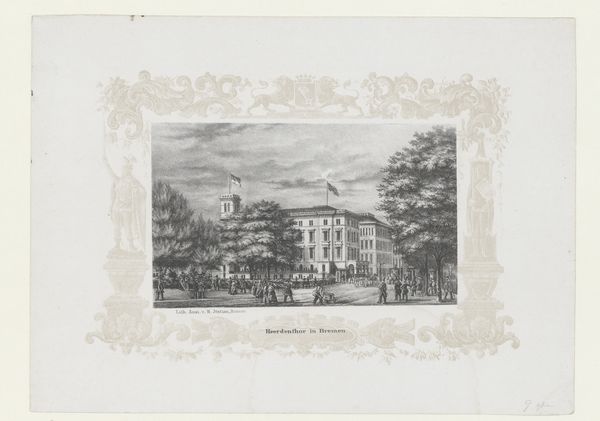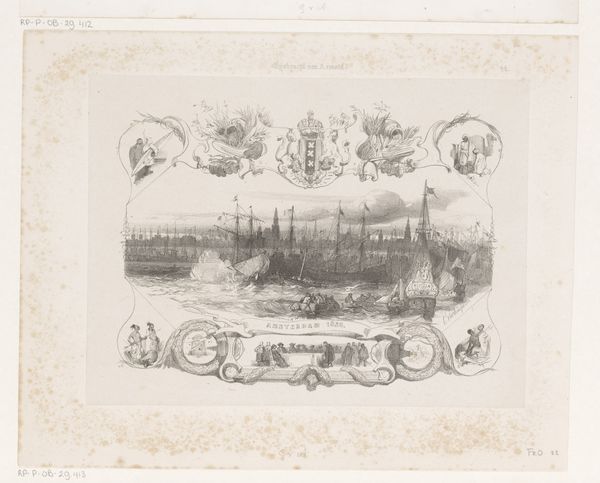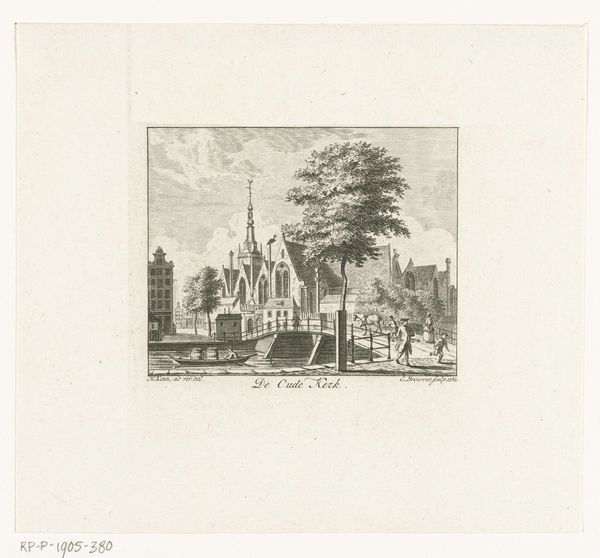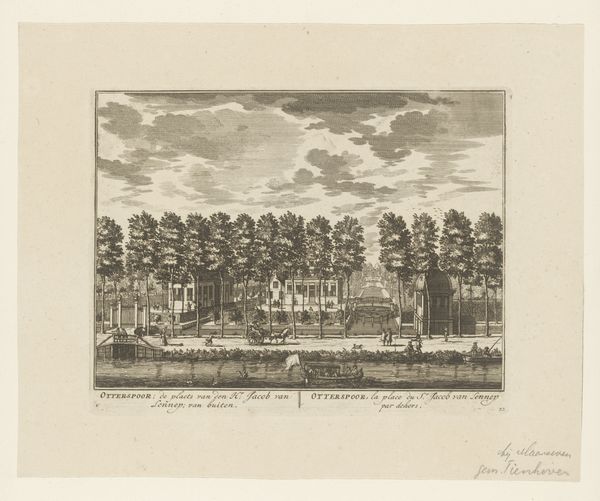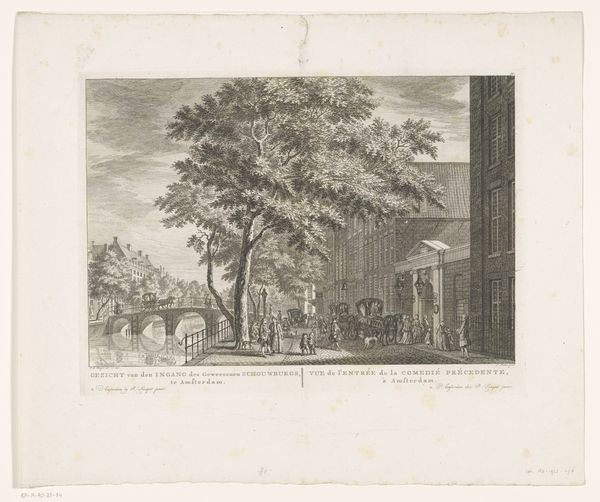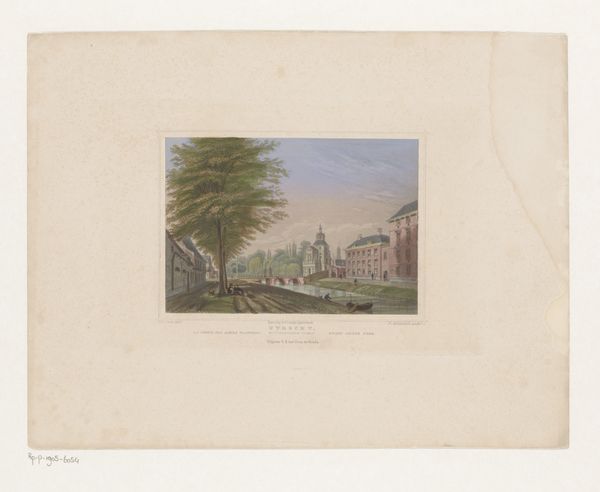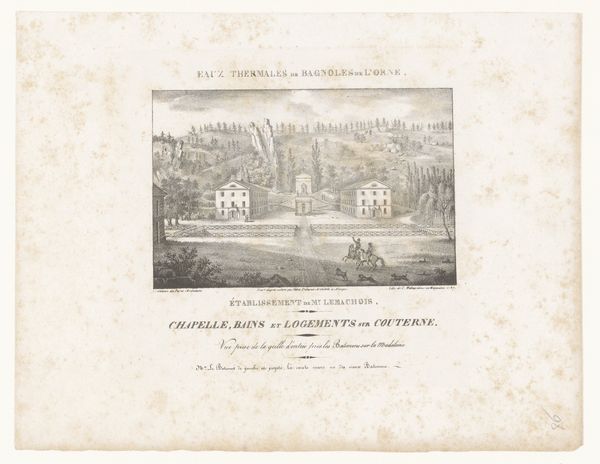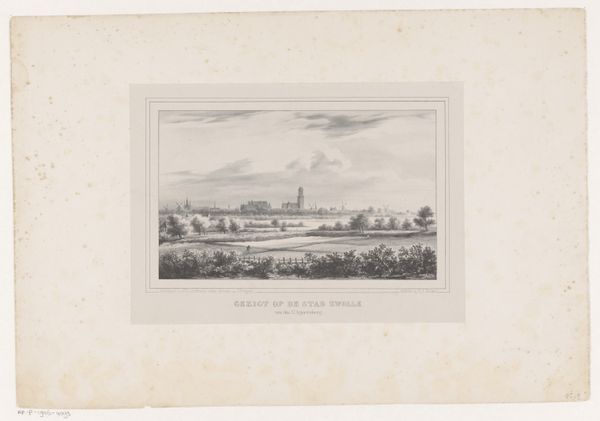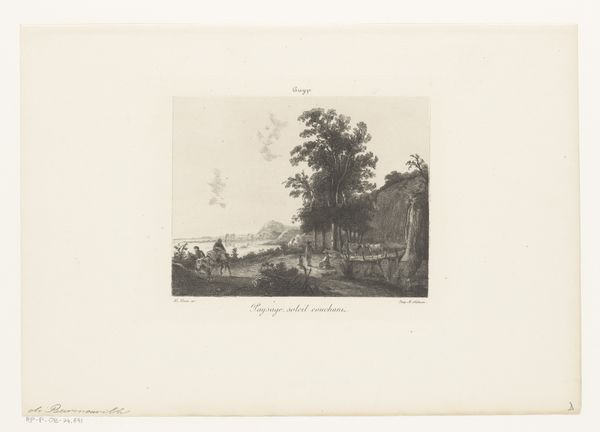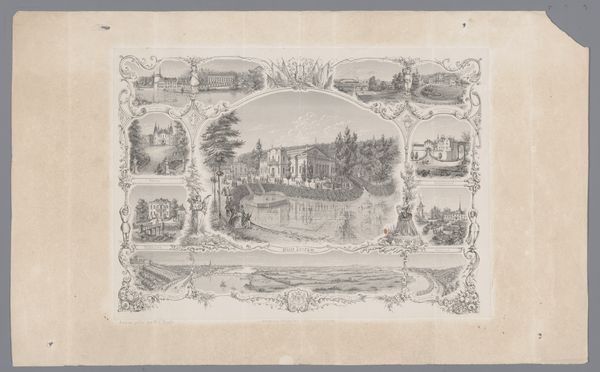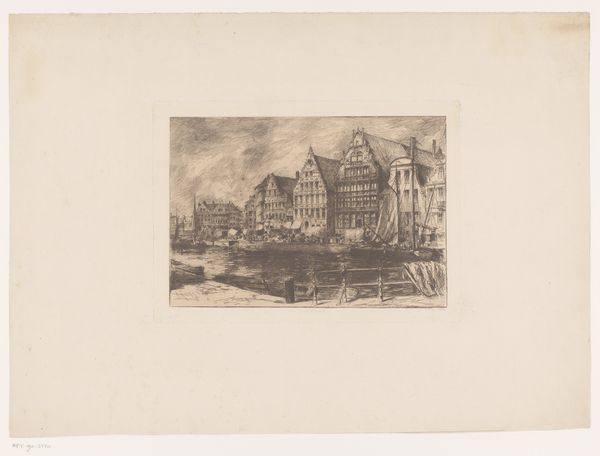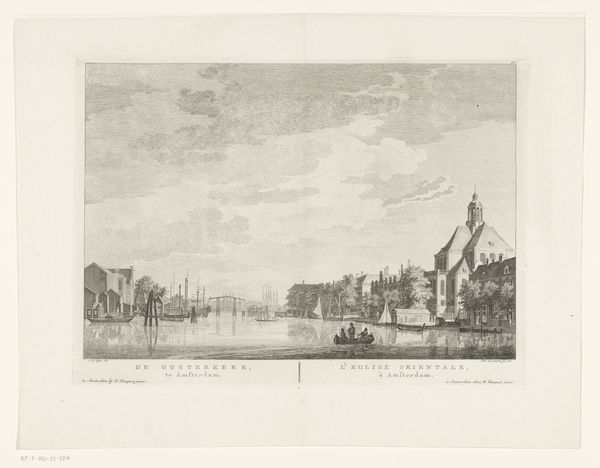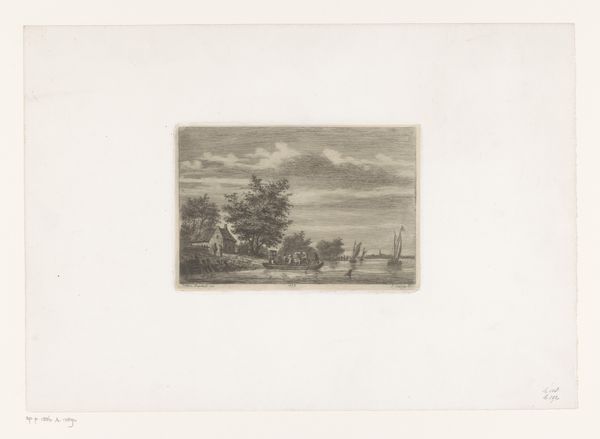
lithograph, print
#
lithograph
# print
#
landscape
#
cityscape
Dimensions: height 190 mm, width 258 mm
Copyright: Rijks Museum: Open Domain
This print, "Gezicht op Bremen," was likely made in the 19th century using lithography. This printing technique involves drawing an image with a greasy crayon onto a flat stone or metal plate, then treating it to hold ink only in the drawn areas. Lithography allowed for relatively quick and inexpensive reproduction of images. Unlike traditional engraving, which required painstaking carving, lithography enabled artists to create more spontaneous, painterly effects. The soft, grainy texture evident here is characteristic of the process. Considered in terms of labor, lithography democratized image-making to a degree. While still requiring skilled technicians to execute the printing, it opened opportunities for artists to disseminate their work more widely. The picturesque scene of Bremen, framed by decorative motifs, reflects the rise of leisure culture and tourism. The print’s appeal lies not only in its aesthetic qualities but also in its accessibility as a mass-produced object, blurring the lines between fine art and commercial production.
Comments
No comments
Be the first to comment and join the conversation on the ultimate creative platform.
